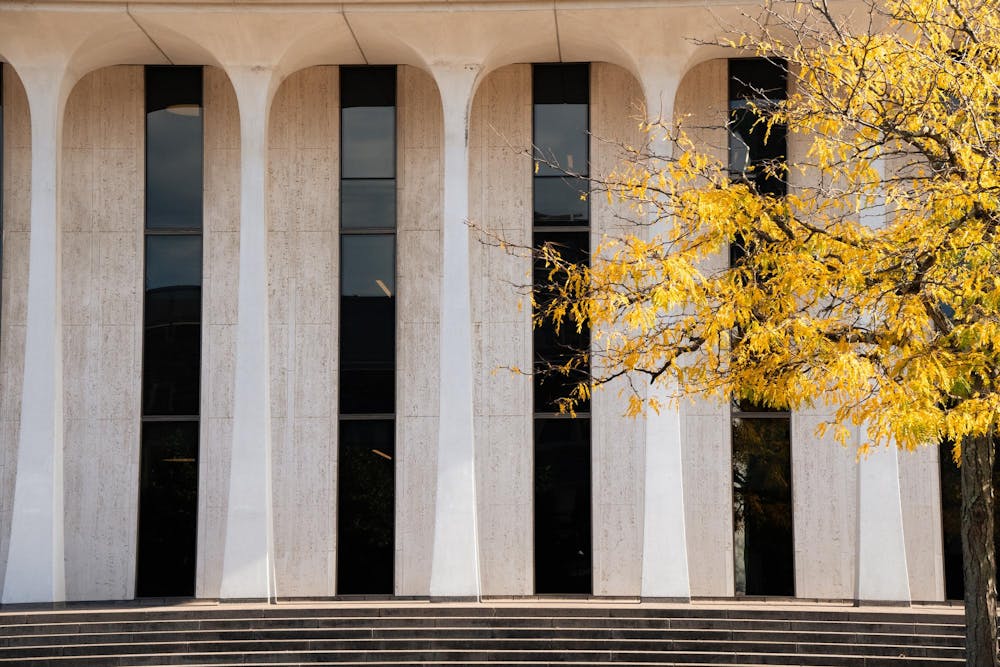The following is a guest contribution and reflects the author’s views alone. For information on how to submit a piece to the Opinion section, click here.
Universities are the enemy. Or so we’ve been told.
So let me take you behind enemy lines to my undergraduate lecture course of about 100 students, called “Schooled: Education, Opportunity, and Inequality.” It’s cross-listed in Sociology and the School of Public and International Affairs, which is already a red flag to those who use “woke” as both adjective and diagnosis.
Class, race and ethnicity, gender, sexuality, religion, political belief, and immigrant status — the course covers all the topics that make Thanksgiving awkward. It looks at how those identities shape K-12 educational experiences and outcomes. Not to provoke guilt. Not to assign blame. Just to understand how schools work, and for whom.
If you’re Vice President JD Vance or conservative activist Christopher Rufo, a class like mine isn’t so much a course as it is a re-education camp with bespoke wood paneling. In their telling, I lead my students in a kind of academic séance. We dim the lights, light the incense, and summon the ghosts of systemic injustice. Then we hand out guilt like condoms at first-year orientation. The accused? White, straight men, sentenced to 50 minutes of heavy sighs and punishing awareness.
And yet, no one’s been forced to confess their privilege. No one’s graded on how sorry they feel. Quite the opposite. I remind my students that they didn’t choose the circumstances of their birth. They had no say in where the stork happened to drop them — whether into comfort or adversity, in the United States or elsewhere.
I also remind them: we are a “we.” Not just members of the same university, but fellow bits of stardust, stumbling around with good intentions, trying to leave the world — and America — better than we found it.
When the midterm rolled around, I didn’t demand that they pen manifestos and take to the barricades. Instead, they read peer-reviewed research on real educational disparities, evaluated competing policy options, and justified their recommendations.

It wasn’t revolutionary. It was homework. But it was homework that asked: how do we build schools that work for all kids? Inclusion, after all, is the “I” in DEI. That’s what we’re thinking about together. And caring about each other’s experiences and opportunities, it turns out, isn’t something you can outlaw.
Here’s what they came up with:
One student wrote about men’s mental health, drawing on his own struggles to access care. He proposed expanding awareness of anonymous hotlines.
A student of faith explored how faculty could better support religious observance by proactively including major holidays on syllabi, rather than leaving students to educate their professors and negotiate absences.

Another explored how selective high schools could support the mental health of immigrant students, not just applaud their academic success.
Another wondered aloud: Why does a roommate’s laptop say, “the future is female,” when any future worth having will be built — messily, together — by both men and women? At the same time, she asked, isn’t it also important to empower women, especially in spaces where they’ve long been excluded? These aren’t easy questions, and that’s the point — fostering the creation of spaces like these where such questions can be asked in the first place.
Once students start seeing the world this way, they can become engineers of inclusive educational design. They notice the invisible scaffolding and its flaws around them, and begin asking questions about how to rebuild it.
But when many Americans picture a college classroom, they imagine a caricature: smug, partisan professors preaching from the lectern. That image was carefully manufactured by those who see political gain in tearing down the university as a public good. But we have done too little to complicate it. We haven’t told the full story of what college teaching looks like in practice — or what learning, at its best, makes possible.
In classrooms across Princeton’s campus, professors don’t divide students into oppressors and oppressed. They work to stitch together a community: E pluribus unum, across identity, background, and belief. Students come to understand not just the systems they live in, but each other. They learn to think across difference, to disagree without dehumanizing, and to listen as carefully as they speak.
It’s not a story that trends on TikTok or makes for good clickbait. But it’s one we urgently need to tell — loudly, clearly, and together. Princeton administrators, professors, students, and alumni all have a role to play in showing the country what higher education really is, and why it matters. The university will survive as a public good only if the public understands its value — and is willing to fight for it.
Jen Jennings ’00 is a Professor of Sociology and Public Affairs and Director of the Education Research Section at Princeton University. She may be reached at jlj[at]princeton.edu.
Please send any corrections to corrections[at]dailyprincetonian.com.








